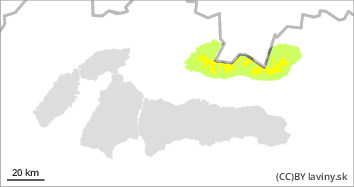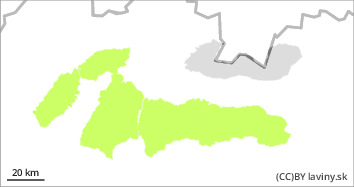
Danger level
 | 1900m |
|  |
|  |

Watch out for snow slabs and pillows at high altitudes above 1900 m asl.
The main avalanche hazard at high altitudes is wind-drifted snow deposited on the leeward sides in the form of snow slabs and pillows. Avalanche release is possible here with higher additional loads. Danger spots in the terrain are relatively easy to see for experienced ski mountaineers and climbers, they are located under saddles, ridges, rock walls and in places where the slope angle changes. At lower and middle altitudes and in places where there is a lack of newer snow, the snow cover is hard to icy after the cold and previous warming.
Snowpack
The snow cover froze and stabilised due to the strong warming and rain, and the subsequent cooling. Newer snow is generally only found at altitudes above 1900 m above sea level and even here it is very irregularly distributed. Strong winds, which changed direction, transported it to leeward places and created snow slabs and pillows. The snow cover is well below average at altitudes up to 1200 m above sea level. Most of the snow is in the Western Tatras above the treeline.
Tendency
Constant avalanche danger
Compiled by Filip Kyzek


